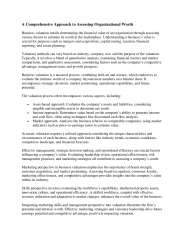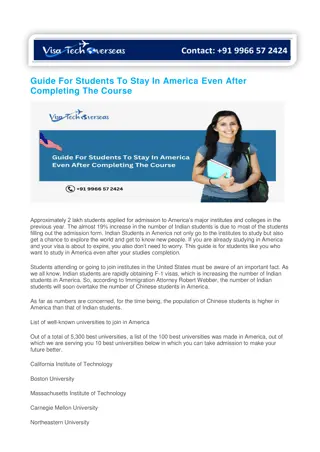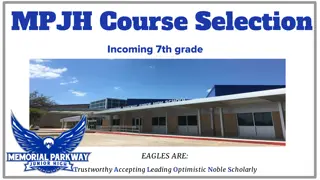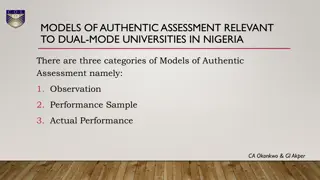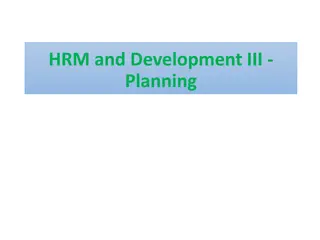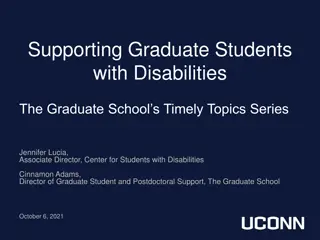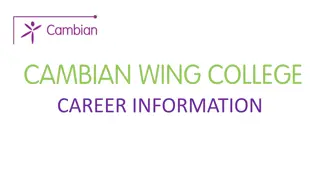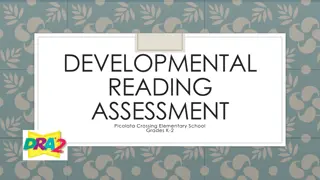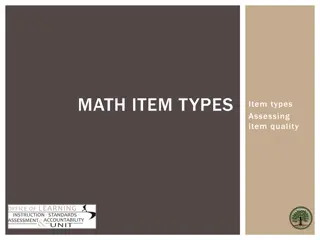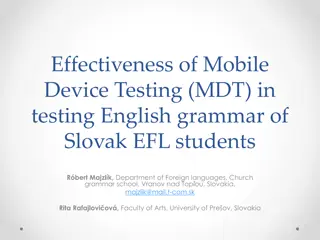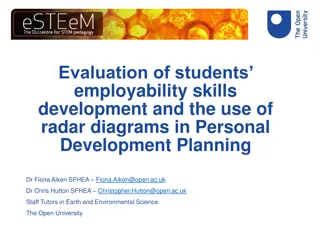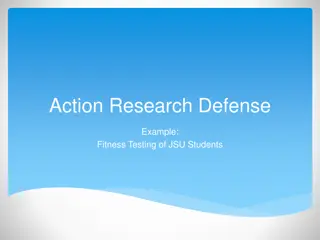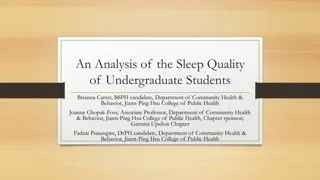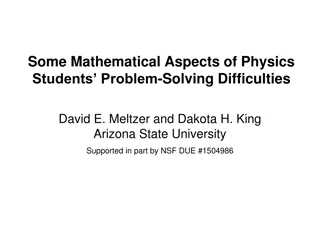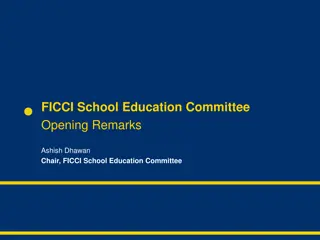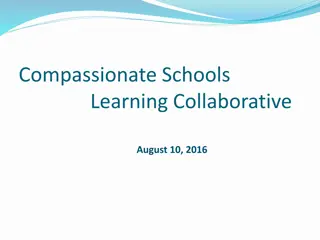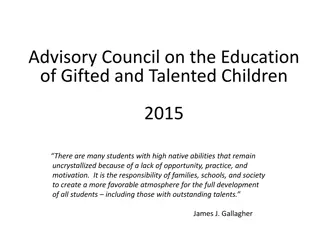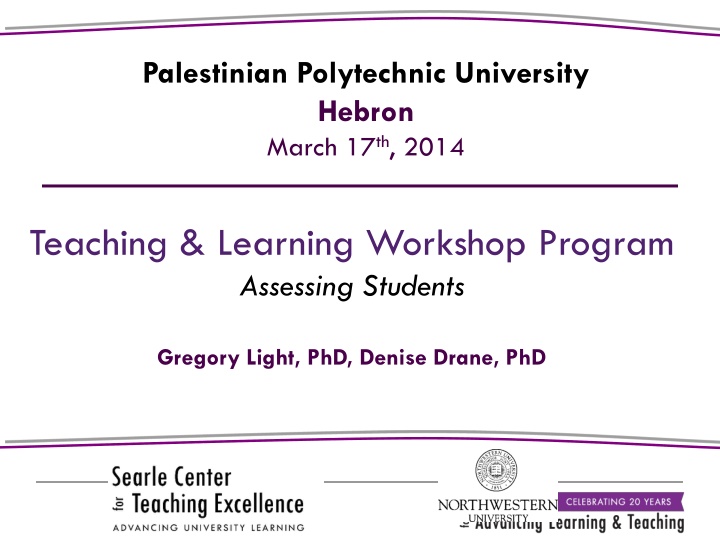
Teaching and Learning Workshop Program at Palestinian Polytechnic University Hebron
Explore the Teaching and Learning Workshop Program held at Palestinian Polytechnic University Hebron in March 2014, focusing on assessing students, critical thinking, and integrating technology in education. Participants engage in activities to enhance course design and student evaluation.
Download Presentation

Please find below an Image/Link to download the presentation.
The content on the website is provided AS IS for your information and personal use only. It may not be sold, licensed, or shared on other websites without obtaining consent from the author. If you encounter any issues during the download, it is possible that the publisher has removed the file from their server.
You are allowed to download the files provided on this website for personal or commercial use, subject to the condition that they are used lawfully. All files are the property of their respective owners.
The content on the website is provided AS IS for your information and personal use only. It may not be sold, licensed, or shared on other websites without obtaining consent from the author.
E N D
Presentation Transcript
Palestinian Polytechnic University Hebron March 17th, 2014 Teaching & Learning Workshop Program Assessing Students Gregory Light, PhD, Denise Drane, PhD
Program Learning Outcomes Participants will develop: Analyze & evaluate their courses in terms of key conceptual frameworks of teaching and learning Apply principles of design for learning in their teaching Generate a repertoire of strategies and practices for: assessing student learning & evaluating courses promoting learning & critical thinking supervising student projects enhancing learning with technology Design/redesign of a course or part of a course
Workshop Program Day 1 Situating Assessment in Learning Assessing Students & Evaluating Courses Day 2 Critical Thinking in Higher Education Day 3 Supervising Students Teaching with Technology
Assessing Students Overview Situating Assessment in Teaching What are we assessing? Assessing Students Why do we assess (discussion) Dimensions of Assessment (Interactive Presentation/Activity) Aligning Assessment (Activity)
Situating Assessment: Teaching for Learning Quality Cycle 1. What learning outcomes do you want your students to achieve, (intellectual, practical, interpersonal, and personal) as a result of taking your course? 2. How will your course help your students achieve these learning outcomes? 3. How will you know if the students on your course have achieved these learning outcomes? 4. How will you know if and how your teaching has contributed to your students learning outcomes? Light G., Cox R. & Calkins S. (2009
Situating Assessment: Teaching for Learning Quality Cycle 1. What learning outcomes do you want your students to achieve, (intellectual, practical, interpersonal, and personal) as a result of taking your course? 2. How will your course help your students achieve these learning outcomes? 3. How will you know if the students on your course have achieved these learning outcomes? 4. How will you know if and how your teaching has contributed to your students learning outcomes? Light G., Cox R. & Calkins S. (2009
Aligning Assessment with a Learning Outcome (Biology Example) Learning Outcome If they have learned it, what will students know and be able to do? Teaching Method Course Goal Assessment What will students learn? What will students do to learn it? How will students demonstrate they know it or are able to do it? Students will understand the transfer of information from DNA to proteins. Students will be able to predict changes in amino acid sequences caused by mutations. In groups students are given sequence of DNA corresponding to amino acid sequence. Students identify reading frame and predict amino acid changes due to mutations in that sequence. On exam students will predict the new amino acid sequence that results from a mutation in a given gene sequence. Knight, (2011)
What type of learning do you want to assess? "If we always do what we've always done, we will get what we've always got." Adam Urbanski
Student Approaches to Learning Surface Surface Surface Strategic Strategic Deep Cope with course requirements requirements Achieve high grades grades Understand for oneself Intention Achieve high Cope with course Memorizing facts Studying with little reflection Treating course as unrelated bits of knowledge Feeling undue pressure/worry pressure/worry Putting consistent effort into studying Managing time Gearing work to perceived teacher preference preference Relating ideas to previous knowledge Looking for patterns/underlying principles Employing critical & creative thinking Becoming actively engaged Process Putting consistent effort into studying Managing time Gearing work to perceived teacher Memorizing facts Studying with little reflection Treating course as unrelated bits of knowledge Feeling undue Entwistle, N. (2005)
Intellectual Objectives Assessing Learning: (Verbs) Write; state; recall; recognize; select; reproduce; measure Knowledge (As recall) SURFACE Comprehension Identify; illustrate; represent; formulate; explain; contrast Application Predict; select; assess; find; show; use; solve; organize; compute Analysis compare; separate; differentiate; contrast; relate; interpret; deconstruct; interrogate; summarise; argue DEEP Evaluation Judge; evaluate; support; confront; critique; generalize; conclude Design, construct, plan, produce, plan, invent, discover Create Bloom B. S. 1956 , Taxonomy of Educational Objectives. 2 vols. New York: Longmans Green
Group Question: Why do we assess students? The quickest way to change student learning is to change the assessment system. Elton & Laurillard, 1979
Purposes of Student Assessment Summative To pass or fail a student To grade or rank a student To license to proceed To select for future courses To license to practice To predict success in future courses To predict success in employment To select for future employment To determine if a student is learning
Purposes of Student Assessment Formative To provide feedback to students to improve their learning To motivate students To diagnose a student s strengths and weaknesses To help students develop their skills of self- assessment To provide a profile of what a student has learnt To determine if students are learning
Purposes of Student Assessment Evaluative To provide feedback to teachers To improve teaching To evaluate a course s strengths and weaknesses To make the course appear respectable and credit worthy to other institutions and employers To determine if students are learning
Dimensions of Assessment Self-Referenced Criterion Referenced Based on knowledge and skills learned on course Based on self-reflection of learning achieved on the course Validity The extent to which the assessment methods reflect student learning and the learning goals of the course Summative Formative Practicality Essentially designed to sum up someone s achievement Essentially designed for use in helping the learning process Reliability The extent to which the results of the assessment method can be trusted Norm-Referenced Peer-Referenced Based on peer appraisal of learning achieved on the course Based on comparisons with others in the group
Dimensions of Assessment Self-Referenced Criterion Referenced Based on knowledge and skills learned on course Based on self-reflection of learning achieved on the course Validity The extent to which the assessment methods reflect student learning and the learning goals of the course Summative Formative Practicality Essentially designed to sum up someone s achievement Essentially designed for use in helping the learning process Reliability The extent to which the results of the assessment method can be trusted Norm-Referenced Peer-Referenced Based on peer appraisal of learning achieved on the course Based on comparisons with others in the group
Dimensions of Assessment Self-Referenced Criterion Referenced Based on knowledge and skills learned on course Based on self-reflection of learning achieved on the course Validity The extent to which the assessment methods reflect student learning and the learning goals of the course Summative Formative Practicality Essentially designed to sum up someone s achievement Essentially designed for use in helping the learning process Reliability The extent to which the results of the assessment method can be trusted Norm-Referenced Based on comparisons with others in the group Peer-Referenced Based on peer appraisal of learning achieved on the course
Dimensions of Assessment Self-Referenced Criterion Referenced Based on knowledge and skills learned on course Based on self-reflection of learning achieved on the course Validity The extent to which the assessment methods reflect student learning and the learning goals of the course Summative Formative Practicality Essentially designed to sum up someone s achievement Essentially designed for use in helping the learning process Reliability The extent to which the results of the assessment method can be trusted Norm-Referenced Based on comparisons with others in the group Peer-Referenced Based on peer appraisal of learning achieved on the course
Dimensions of Assessment Self-Referenced Criterion Referenced Based on knowledge and skills learned on course Based on self-reflection of learning achieved on the course Validity The extent to which the assessment methods reflect student learning and the learning goals of the course Summative Formative Practicality Essentially designed to sum up someone s achievement Essentially designed for use in helping the learning process Reliability The extent to which the results of the assessment method can be trusted Norm-Referenced Based on comparisons with others in the group Peer-Referenced Based on peer appraisal of learning achieved on the course
Dimensions of Assessment LEARNING-CENTERED Self-Referenced Criterion Referenced Based on knowledge and skills learned on course Based on self-reflection of learning achieved on the course Validity The extent to which the assessment methods reflect student learning and the learning goals of the course Summative Formative Practicality Essentially designed to sum up someone s achievement Essentially designed for use in helping the learning process Reliability The extent to which the results of the assessment method can be trusted Norm-Referenced Based on comparisons with others in the group Peer-Referenced Based on peer appraisal of learning achieved on the course TEACHING-CENTERED
Activity: Assessment Methods Choose 1or 2 assessment methods you currently use and map it on to these dimensions. Do individually, then share with group
Assessment Methods (Some Examples) final exam (multiple choice) final exam (written) quizzes Homework projects reports presentations cold calling observed discussion groups career performance standardized tests office hours personal response systems
Aligning Assessment & Using Rubrics The most important thing about assessment is that it promotes dialogue among faculty. Mary Senter
A Typical Rubric Format (1) Weak Little or no evidence of outcome STUDENT EVIDENCE (2) Basic Some evidence of outcome (3) Proficient Detailed evidence of outcome (4) Strong Highly creative; outcome TEACHER CRITERIA Criterion 1 Argument Criterion 2 Integration of literature Criterion 3 Writing quality Adapted from Beauchamp et al 1996
Assessing Writing: Example Rubric (1) Weak Little or no evidence of outcome Rambling; poor use of logic; personal opinion No or minimal use of sources (2) Basic Some evidence of outcome (3) Proficient Detailed evidence of outcome Strong structure & logic, evidence used throughout (4) Strong Highly creative; outcome Strong structure & evidence; sophisticated discussion Sources well integrated; critique made Criterion 1 Argument Basic structure with some use of evidence Criterion 2 Integration of literature Criterion 3 Writing quality Sources used, but no integration of writer s ideas Sources well integrated into author s ideas Poor organization, grammar, syntax Some effort to organize ideas; grammar/syntax problems Good organization; very few grammar/ syntax problems Well-developed flow; error-free; elegant style Adapted from Beauchamp et al 1996
Benefits of Rubrics Used for grading (Summative) or feedback (Formative) Clear criteria (Criteria Ref.) Ensure grading aligns with learning outcomes (Validity) Shared with multiple teacher graders/situations (Reliability) Can be used with students (Self Ref.) and peers (Peer Ref.)
Activity In small group, identify and design a rubric for a specific Learning outcome Large Group Discussion
3 ideas to take with you Assessment is teaching Students need to be involved Assessment gives you no more than what you ask for
Final Activity QUESTIONS?
References Entwistle, N. & Tait, H. (1990) Approaches to learning, evaluations of teaching and preferences for contrasting academic environments , Higher Education, 19 (2): 169 94. Peter Ewell (2008) Assessment & Accountability in America Today: Background and Context in New Directions for Institutional Research: Assessment Supplement. Wiley InterScience. Knight, J. (2011) University of Colorado. NAS/HHMI Summer Institute on Undergraduate Biology Education, Madison, WI. Light, G, & Micari, M. (In press) Making Scientists: Six Principles for Effective College Teaching, Harvard University Press. Beauchamp, McConaghy, Parsons & Sanford. (1996) Teaching From the Outside In. Duval: 1996, 37.
ALIGNING MULTIPLE-CHOICE QUESTIONS
Testing low-level knowledge Purely economic loss is recoverable in a product liability action. a) True b) False Purely economic recovery will be barred in which of the following causes of action? a) Negligence b) Fraud c) Defamation d) Product liability What s the rule? No context, not allowing for interpretation/analysis from Case & Donohue, 2008
Revision: Higher-level understanding A restaurant hired an exterminator to eliminate cockroaches from the basement under the restaurant. Around midnight, the exterminator applied to the basement floor and walls an effective pesticide that he had purchased from the manufacturer. A toxic gas released by the pesticide penetrated into the restaurant kitchen and did not disperse by the next day. As a result, the restaurant was required to close that day. The restaurant brought a tort action based on product liability against the pesticide manufacturer for lost profits. Will the restaurant prevail? a) No, because in this action purely economic loss in not recoverable. * b) No, because the exterminator was the proximate cause of the restaurant's damages. c) Yes, because the manufacture of pesticides is an abnormally dangerous activity. d) Yes, because the pesticide was being used as intended. from Case & Donohue, 2008

